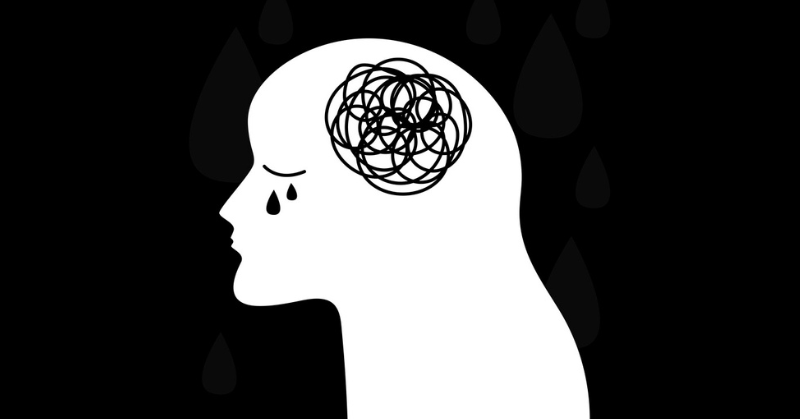Trauma is an event that leaves a lasting impact on the person or people experiencing it. This event is beyond what you would expect for a common human experience and one that causes exceptional distress.
Trauma may result from human-made events or natural events which are serious enough to leave a mark on a person; a mark that doesn’t fade quickly.
Traumatic events aren’t always directly personal. They may be larger events that deeply affect the person witnessing them. One example is the September 11th terrorist attacks on the World Trade Center and other sites across the United States, which were widely viewed on national news media as they were happening.
Other examples of indirect trauma may include mass shootings, social problems, and poverty. These things aren’t always personal, but they can certainly feel personal.
Speak to an accredited and experienced therapist to help you process a trauma and minimize its long-term effect on you. You may want to try speaking to one via BetterHelp.com for quality care at its most convenient.
Big “T” and little “t” trauma explained.
Trauma can be categorized into big “T” trauma and little “t” trauma.
Big “T” trauma tends to be caused by an event that most people commonly associate with trauma. The DSM-V defines PTSD trauma as a situation where one’s life or bodily integrity is threatened. Examples of big “T” trauma include fighting in or being caught up in a war, natural disasters, catastrophic accidents, or sexual and physical violence.
Little “t” trauma tends to be much smaller in scope than big “T” trauma and may build up over time. Little “t” traumas aren’t quite as “personal” as events such as experiencing war or surviving a sexual assault. Instead, it’s more along the lines of your mind reacting to an event that wouldn’t necessarily be traumatic to other people; or smaller events compounding over time.
Examples of little “t” trauma include losing a pet, being in a non-serious car crash, losing a job, or living in poverty.
And then there are traumatic events that lie somewhere in between big “T” traumas and little “t” traumas. For example, infidelity trauma is a thing that exists. Not many people would associate being cheated on as a traumatic event. It is also an event that may or may not deeply affect the person who is cheated on. However, if it affects the person, it’s still a major and serious event.
Infidelity throws a lot of fear, doubt, and pain onto the person who is cheated on. Their ability to trust may be damaged. They may avoid relationships from then on out. They may find themselves living in fear of where they will live, what they will do, and how it’ll affect their kids.
The fallout of infidelity can be traumatic in itself. The couple may find their family and friendship groups divided as people take sides. Further lies and viciousness if the relationship dissolves can continue to pour harm onto both partners. And that’s not even touching the nastiness of divorce and family court, where the worst of good people is often displayed.
Trauma and Post-Traumatic Stress Disorder
Not everyone who experiences traumatic events will develop post-traumatic stress disorder (PTSD). The development of PTSD will differ from person to person. How the person responds to the traumatic event will typically depend on things like tolerance for stress, morals, values, expectations, beliefs, and past experiences.
The primary differentiator appears to be how well a person can process their experience without engaging in avoidance. Avoidance can increase the severity of PTSD because it tends to reinforce the negative feelings of the event. This happens because the person is not allowing their brain to process the emotions as it needs to. Thus, their mind gets hung up around those emotions, and they continue to play over and over.
Of course, there are many reasons that people might avoid letting themselves feel their emotions. They may think they are displaying weakness by showing they are affected by the event. It could be that they don’t have healthy emotional habits which allow them to. It could also be a lack of time and pressure. Who has time to sit around, cry, and be angry when you have a job, housework, and a family to take care of? And still, some people avoid those emotions solely to avoid the pain of their experience.
Though there are many factors at work. Avoidance is but one significant factor that contributes to the development of PTSD.
The Effect of Big “T” Trauma
A person who experiences a traumatic event may or may not find their body responds to it. There are six common ways that your body reacts to help prevent you from being harmed.
1. Freeze.
The freeze response may include the sharpening of senses as your brain tries to determine what kind of threat you are under. But instead, it’s devoting all of its processing power to taking in and interpreting what is happening around or to you.
2. Flight.
After your brain has identified that you are in a threatening situation, your body tenses up and readies itself to flee.
3. Fight.
You may become angry or ready to fight off the threat to prevent anything from happening to you. As a result, your heart rate will typically increase to push more oxygen to your muscles for the fighting it is preparing to do.
4. Fright.
Fright occurs when your mind becomes so overcome with emotions that it ceases to be able to concentrate or think clearly. You may become immobile to minimize harm when your brain identifies no way to escape or fight.
5. Flag.
Flagging is a physiological response where your body shuts down. Your emotions blunt, your blood pressure drops, and your biological systems shut down.
6. Faint.
In extreme situations, you may faint.
Most people won’t experience all of these possibilities. Some may only experience one or another, and others might experience multiple effects. In addition, people experiencing specific types of trauma often experience similar effects.
For example, survivors of sexual or physical violence may have difficulty remembering their experience because of their fear and inability to fully comprehend what’s happening. This may also create gaps in memory or cause misremembering the order in which events occurred.
After the Trauma
A trauma survivor may find counseling helpful whether they have experienced a big “T” trauma or a little “t” trauma. Both types of trauma can leave a lasting mark. Though the body has different processes to respond to an immediate threat, the brain doesn’t always know how to process emotions and experiences. Furthermore, we can consciously interrupt our processing.
You may find yourself pushing out painful memories or emotions to avoid feeling them, which can cause them to loop over and over. That extended period of looping emotions can be frustrating, painful, and exhausting after a while. In addition, it can drive people to substance abuse, self-harm, or suicide attempts.
It will be a good idea to seek counseling if you find your peace regularly disturbed by a past traumatic event. You may need help navigating and processing the experience to get through it. You may also avoid the trauma from affecting you deeper than it otherwise would by seeking help immediately after a traumatic event occurs.
The general suggestion is to wait six months to see if you process and heal from the trauma naturally. Suppose it is still negatively impacting your ability to function in your day-to-day life, like with nightmares or overwhelming emotions. In that case, you should seek help from a counselor.
Reasonable expectations are necessary with counseling. You will not be able to go back to before the trauma happened to you, but you can make great strides in healing the wound and creating greater peace within yourself.
BetterHelp.com is a website where you can connect with a therapist via phone, video, or instant message.
Too many people try to muddle through and do their best to overcome issues that they never really get to grips with. If it’s at all possible in your circumstances, therapy is 100% the best way forward.
Click here if you’d like to learn more about the service BetterHelp.com provide and the process of getting started.
You may also like:
- Trauma Triggers: Identifying, Dealing With, And Managing Them
- Trauma Dumping: What It Is, How To Stop Doing It, How To Handle It











